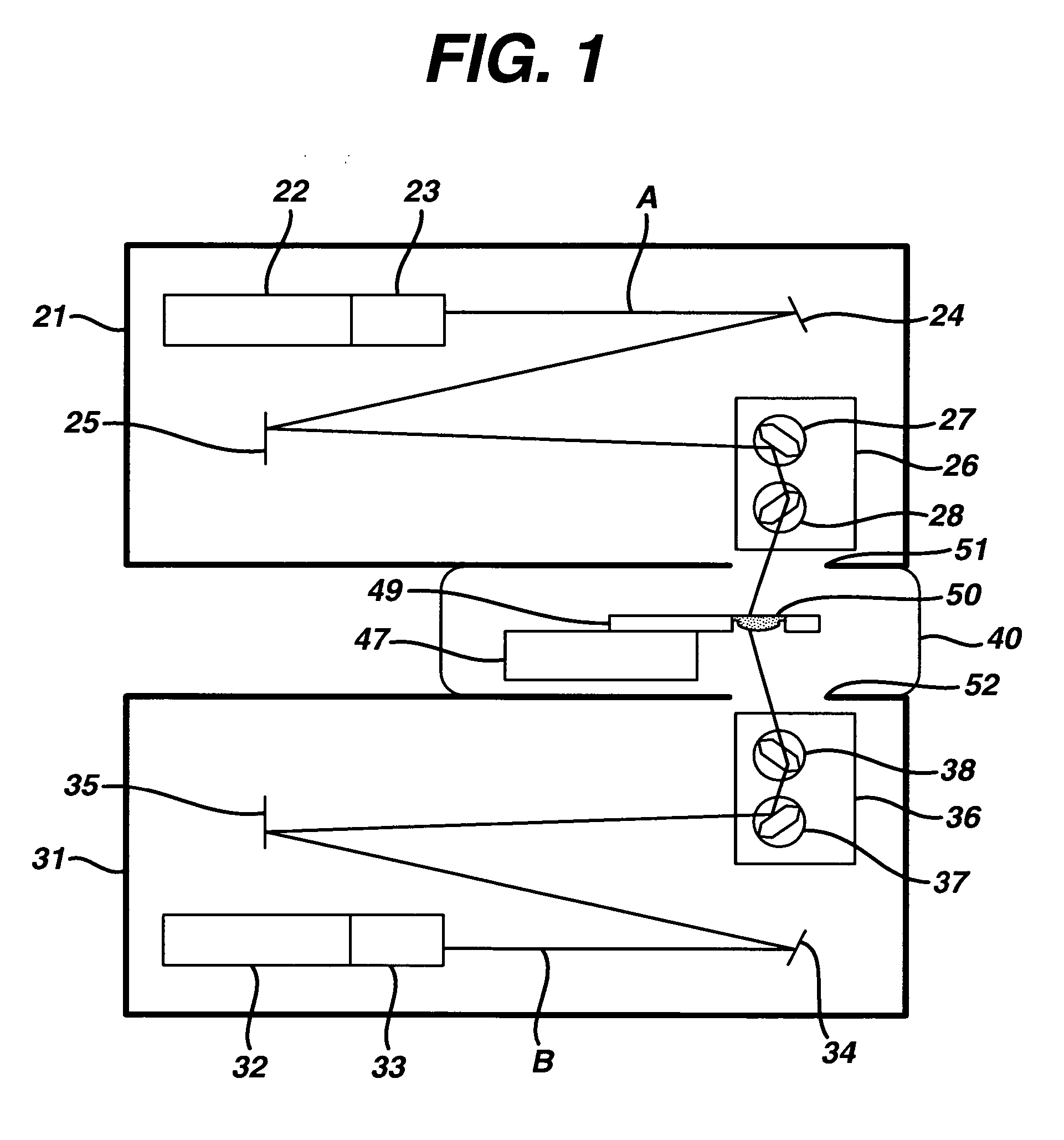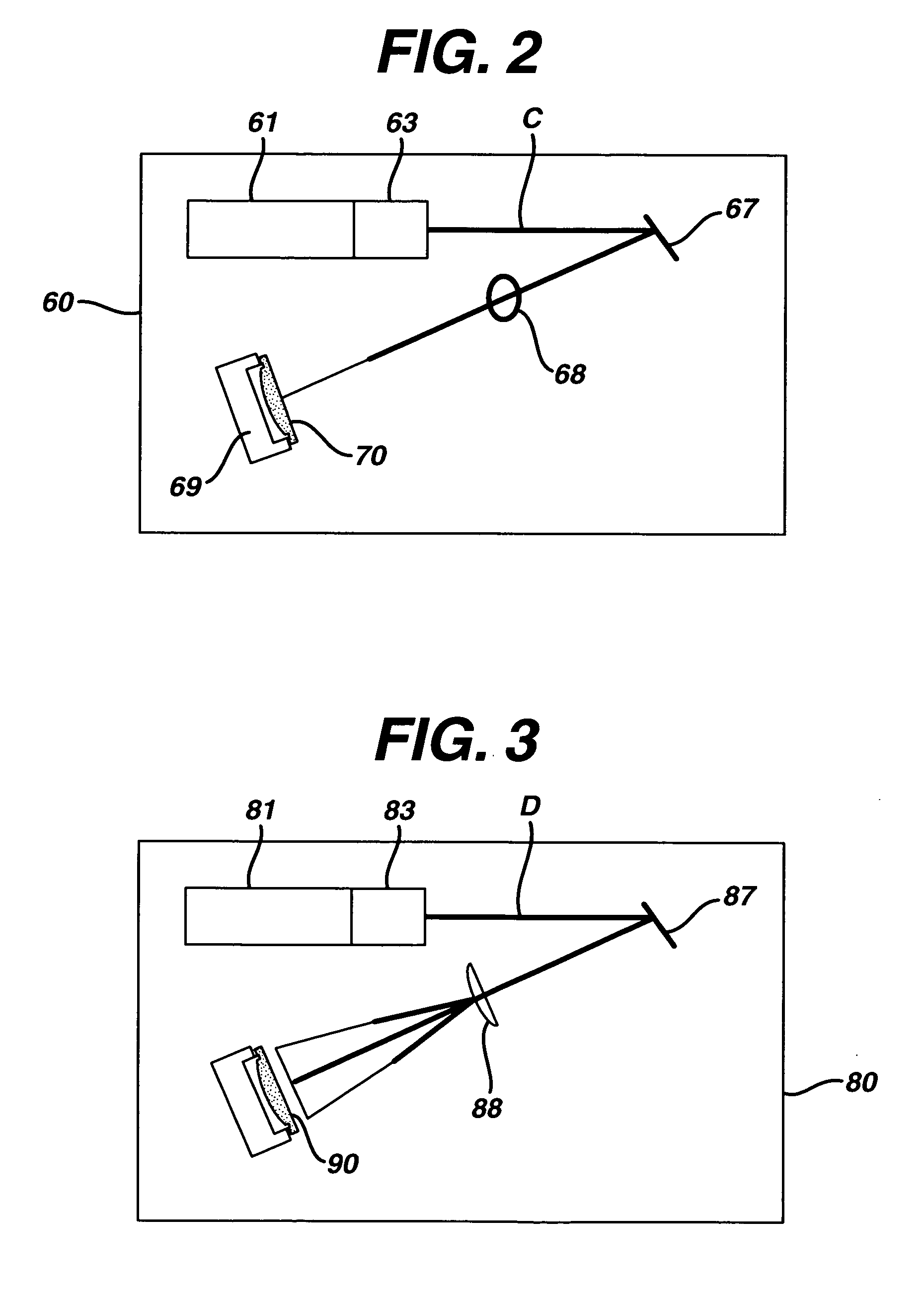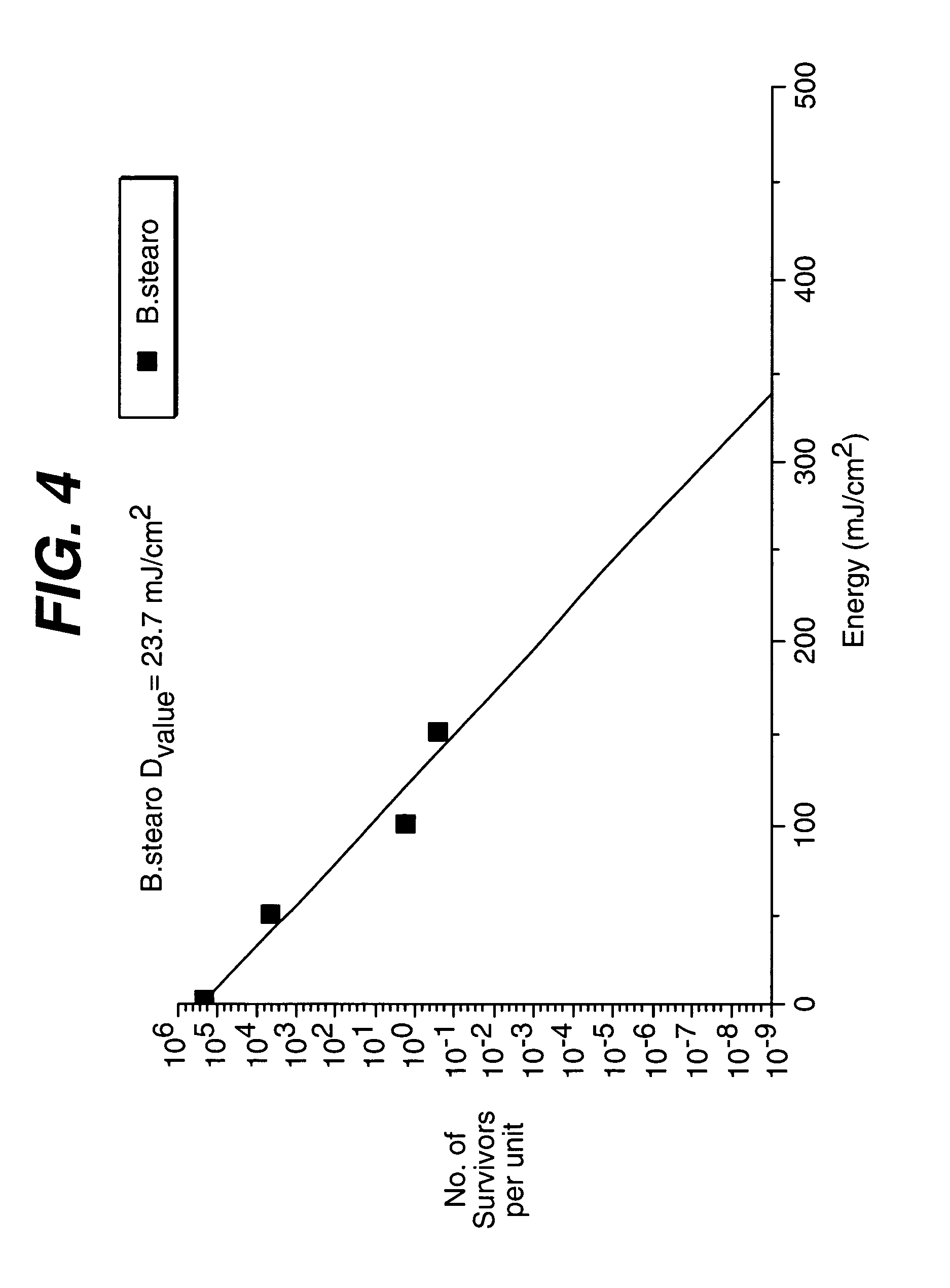Method and apparatus of sterilization using monochromatic UV radiation source
a radiation source and monochromatic technology, applied in the field of sterilization of medical devices, can solve the problems of non-ionizing radiation such as monochromatic, time-consuming and costly batch-wise autoclave sterilization step, and (uv) light is known to damage the dna of exposed cells
- Summary
- Abstract
- Description
- Claims
- Application Information
AI Technical Summary
Benefits of technology
Problems solved by technology
Method used
Image
Examples
second embodiment
[0060]FIG. 2 illustrates the invention which shows a treatment chamber 60 which comprises laser 61, frequency doubler 63, galvo mirror 67, spherical lens 68, and product support 69. The laser radiation beam 62 is shown exiting the laser, deflected by the galvo mirror 67 and focused by spherical lens 68 onto a container 70 shown in the product support 69. The galvo mirror 67 is used to raster scan the container 70 in both the x and y directions. The spherical lens 68 focuses the beam width down to a smaller point which increases the intensity of the radiation at that point.
third embodiment
[0061]FIG. 3 illustrates this invention, which shows a treatment chamber 80 which comprises laser 81, frequency doubler 83, galvo mirror 87, cylindrical lens 88, and product support 89. The laser radiation beam 82 is shown exiting the laser, deflected by the galvo mirror 87 and focused by cylindrical lens 88 onto a container 90 shown in the product support 89. The cylindrical lens 88 focuses the radiation beam D into a line in the x-direction having a width (or length) greater than the container 90. The galvo mirror 87 is used to scan the container 90 with the line of radiation in the y-direction.
[0062] The energy levels specified herein can be used to determine the exposure that is required to sterilize a medical device in a container. The transmissivity of a container and the medical device within the container must be determined. As taught herein, it is now known that the minimum level of energy which must reach the inside of the container and the surface of the medical device to...
PUM
| Property | Measurement | Unit |
|---|---|---|
| wavelengths | aaaaa | aaaaa |
| wavelengths | aaaaa | aaaaa |
| wavelengths | aaaaa | aaaaa |
Abstract
Description
Claims
Application Information
 Login to View More
Login to View More - R&D
- Intellectual Property
- Life Sciences
- Materials
- Tech Scout
- Unparalleled Data Quality
- Higher Quality Content
- 60% Fewer Hallucinations
Browse by: Latest US Patents, China's latest patents, Technical Efficacy Thesaurus, Application Domain, Technology Topic, Popular Technical Reports.
© 2025 PatSnap. All rights reserved.Legal|Privacy policy|Modern Slavery Act Transparency Statement|Sitemap|About US| Contact US: help@patsnap.com



